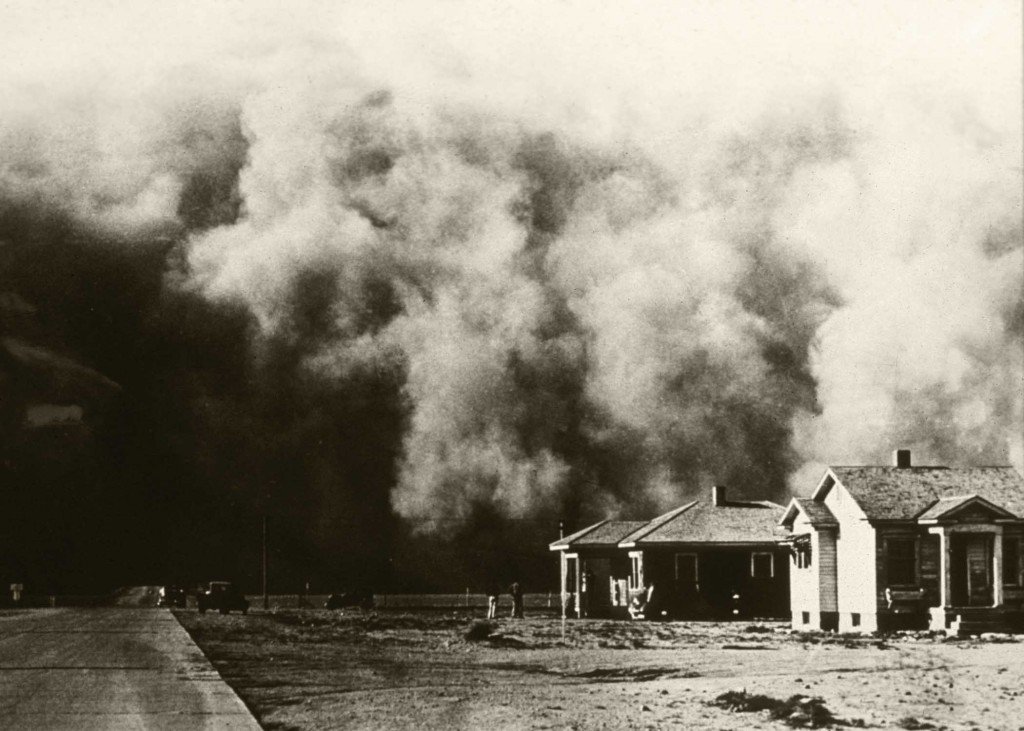
History
“The nation that destroys its soil destroys itself” –President Franklin D. Roosevelt upon signing legislation authorizing the creation of the Soil Conservation Service in 1935
The roots of Waldo County Soil and Water Conservation District, like all conservation districts, go back to the Dust Bowl tragedy of the 1930’s. The response to this devastation was the creation of the federal Soil Conservation Service (SCS) and the establishment of a unique local-state-federal partnership aimed at proper use and conservation of our nation’s soil and water resources. That partnership is embodied in Soil and Water Conservation Districts (SWCDs), which provide local-level solutions to local problems.
With this relationship, federal support comes from the SCS, now known as the Natural Resources Conservation Service (NRCS). NRCS provides strong technical expertise for a range of larger scale agricultural and natural resource initiatives. State and local governments, and conservation districts, have authority to use that support and are entrusted to assist their communities. SWCDs are non-regulatory bodies that use public and private funds to deliver technical assistance, education and outreach to public and private landowners, and to schools. We promote the sustainable use of natural resources.
The result is 50 different state soil and water conservation agencies, each one structured to best respond to the needs and problems of their respective states. Beneath them are local conservation districts, state-chartered units of local government, each one different, each one able to make its own decisions and provide support in a non-regulatory fashion according to the needs and interests of county landowners.
In the early 1940s, local farmers Hezzie R. Ward and John H. Edgerly were concerned about soil erosion in Waldo County and sought others interested in forming a conservation district. They had no trouble finding enough landowners and, under Chapter 29, Revised Statutes 1944, of the Laws of the State of Maine, the Waldo SWCD was founded in 1944. It then grew from a few farmer cooperators to over 600 landowner cooperators, including non-farmers.
Today there are 16 Soil and Water Conservation Districts in Maine. Waldo County District is the smallest (497,280 acres of land and freshwater areas) yet one of the most diversified in natural resources. Each District is led by a five-member Board of Supervisors, each serving a three-year term. Three of the positions are elected locally, and two are appointed (upon District recommendation) by the State of Maine Department of Agriculture, Conservation and Forestry. In addition, the District appoints Associate Supervisors to encourage broad-based input and leadership within the county.
While Waldo County has never faced the conditions experienced in the Dust Bowl, conservation is no less important here. As the population of Waldo County continues to change from large production farms to smaller scale start-up and organic farms and increasing urban development, the conservation needs are also changing. Soil erosion control on cropland is still of concern, as it was in 1944, and today we face additional monumental concerns, such “polluted runoff” (otherwise known as non-point source pollution), stream and habitat fragmentation, and climate change impacts. The Supervisors and District programs offer a broader range of conservation and resource assistance today, placing more emphasis on conservation education. We partner with local landowners, nonprofit organizations, and federal, state, and local governments to protect our soil, water, forests, wildlife and aquatic systems.
We invite anyone who is interested in getting involved and learning more to stop by our office at 46 Little River Dr. in Belfast or give us a call at 207-218-5311.
Board member, Harold Larrabee, with his family after Aghaloma Farms was voted Outstanding Conservationist in Waldo County in 1981

